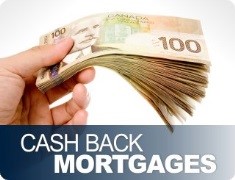
Currently, all borrowers in Canada need to qualify for a new mortgage at the current Bank of Canada Benchmark Qualifying Rate or at their approved mortgage interest rate plus 2.0%, whichever is higher.
For more than a year, this Bank of Canada Benchmark Qualifying Rate has been 5.34%. Now, for the first time in 3-years, the Bank of Canada has decreased that Qualifying Rate to 5.19%, a 0.15% decrease.
What does this mean?
The Bank of Canada Qualifying Rate is essentially a lender’s Stress Test Rate. If a borrower has an annual gross income of $60,000, they can qualify for a $265,000 purchase price with a 10% down payment at a 5.34% qualifying rate.
By changing the qualifying rate to 5.19%, that same borrower qualifies for a $269,000 purchase price at 10% down payment. This is a $3,700 increase in borrowing ability.
A borrower with $80,000 of gross annual income and a 20% down payment qualifies for a $455,000 purchase price at the 5.34% Bank of Canada Qualifying Rate. Change it to 5.19%, it increases to $462,000. A $5,600 increase in borrowing ability.
The ironic part of this is that the Stress Test was implemented to protect consumers against rising interest rates. The government’s concern was that borrowers would not be able to cover their monthly payments when they came up for renewal.
Highest 5-year interest rate since January 2010? 3.79%.
Highest 5-year fixed interest rate in the past 5-years? 3.24%.
Last time someone had to pay an interest rate above 5%? For one month in 2009 and before that, summer of 2008.
Food for thought! If you have any other questions regarding the Bank of Canada qualifying rate or the mortgage Stress Test rules, please do not hesitate to contact me!



 Program Details
Program Details